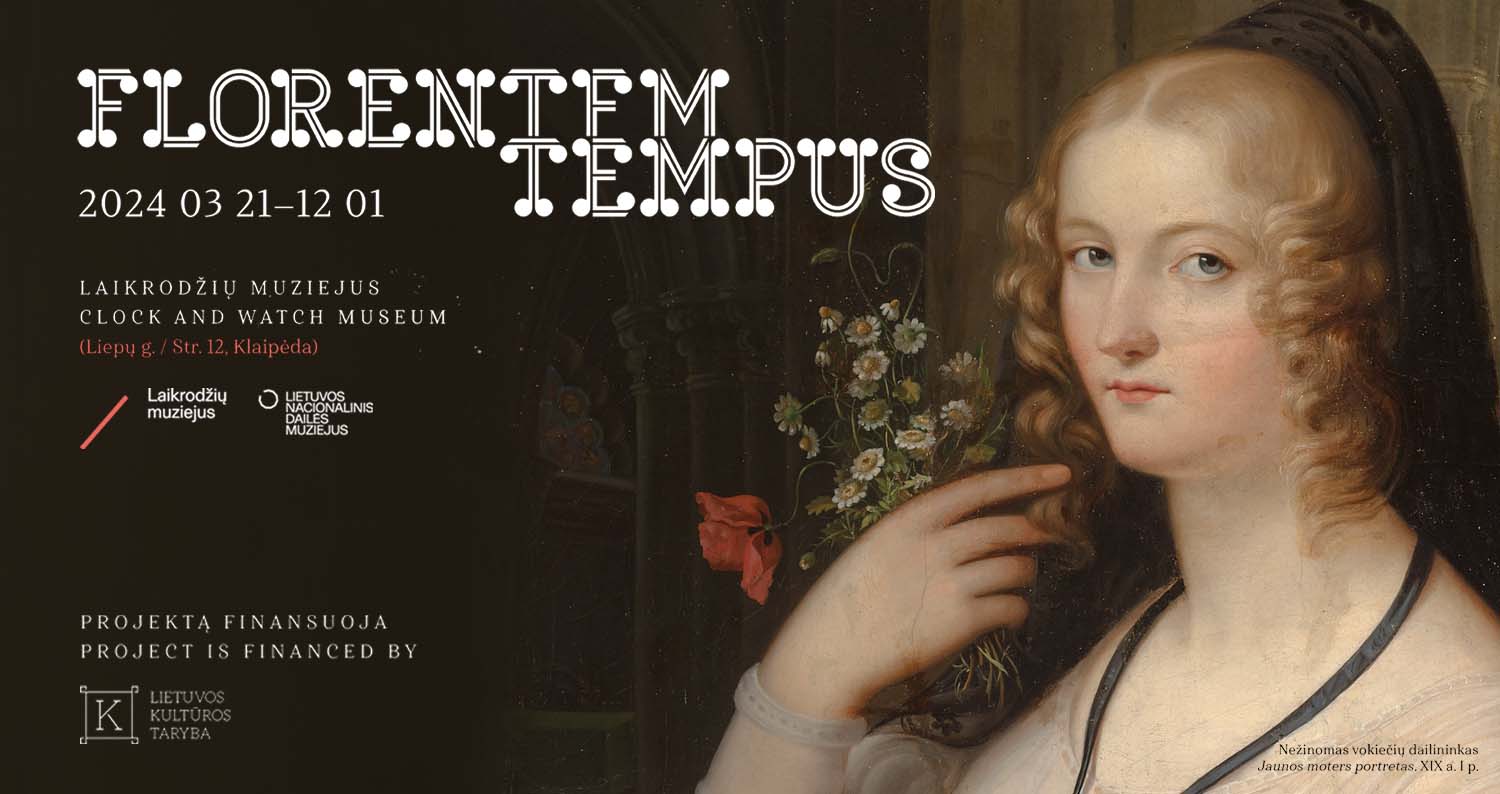The exhibition "Florentem", received with great interest in Vilnius, arrives in Klaipėda, the Clock and Watch Museum of the LNMA
Exhibition opening at 5.30 pm, 21 March 2023
 Starting 21 March, the citizens and visitors of Klaipėda will be able to see the exhibition Florentem at the Clock and Watch Museum. It is an extended and adjusted for the audience of the Clock and Watch Museum version of the exhibition Florentem, previously hosted by Vilnius Picture Gallery and very popular with art lovers and professionals. The exhibition is a reflection of a human effort to define humanity in its relationship with nature and how it changed with time. The significance of the natural motifs, especially plant motifs in the explorations of the world, and in search of inspiration is yet another thematic thread of the exhibition.
Starting 21 March, the citizens and visitors of Klaipėda will be able to see the exhibition Florentem at the Clock and Watch Museum. It is an extended and adjusted for the audience of the Clock and Watch Museum version of the exhibition Florentem, previously hosted by Vilnius Picture Gallery and very popular with art lovers and professionals. The exhibition is a reflection of a human effort to define humanity in its relationship with nature and how it changed with time. The significance of the natural motifs, especially plant motifs in the explorations of the world, and in search of inspiration is yet another thematic thread of the exhibition.
“I am pleased that the Lithuanian National Museum brings the inspirational exhibition Florentem to Klaipėda in spring. I am confident that this so well-received narrative abouts humans and nature will endow the port city with fresh colour, and will offer some cultural discoveries to the public of the town”, Dr Arūnas Gelūnas, director general of the LNMA says.
According to the art researcher Helmutas Šabasevičius, who reviewed the exhibition for the weekly 7 meno dienos, the exhibition is like a garden with its abundant plants: “it lures to return, to observe things which remained hidden in a shadow during the first stroll across, temporally overshadowed by the larger and more impressive plants.”
The language of flowers, religion and science
The exhibition co-curated by Agnė Jonikaitė, Dr Aistė Bimbirytė, Dalia Tarandaitė, Ramunė Savickaitė, Joana Vitkutė Florentempus (floren in Latin – meaning blossoming, plenteous, tempus – time) is an engaging narrative about the continuous attempt to learn about the elements of nature, and to employ them to define, often also to stop – for a short while – the time of being in this world.
Fragile and unpredictable, at the same time, vivacious and surprising plant world has always excited human fantasy, while the plants, especially the blooming ones, when translated to the works of art and literature, gradually took on the gift of language imparted on them by humans in a form of symbolism. Depending on the context, a bloom of a flower in a portrait could prompt whether the depicted person is alive or dead, refer to something of the sitter’s biography and lead to intuitions about his or her fate. Different plants integrated in the images showing the Virgin Mary or saints signify specific stages in their lives and the relationship with the Lord. A poppy bloom in a woman’s lap, o a lily in the hands of a Lord’s Servant – nothing, not a single flower is accidental. It is yet without mentioning the floral still life or lush wreathes which signifying the economic power of a country or and individual, hint at the religious and economic tensions. The language of flowers is inexhaustible and everlasting.
“We sought to create an intricate and visually pleasurable narrative, which reveals how nature inch by inch crept into in the religious and secular canvases, took root there and came to flourish, and why it was allowed to go rampant unrestrained”, Dr Aistė Bimbirytė, director of Vilnius Gallery and a co-curator of the exhibition, explains the intent of the exhibition.
The exhibition is divided into four thematic parts: the aesthetics of the parks of nobility estates, flowers in secular art, plants in religious art, flowers and time.
The exhibition Florentempus is open to public from 21 March to 1 December at the Clock and Watch Museum of the LNMA (Liepų St 12, Klaipėda)
Curators: Agnė Jonikaitė-Stonkuvienė, Dr Aistė Bimbirytė, Dalia Tarandaitė, Ramunė Savickaitė, Joana Vitkutė, Danutė Menkutė
Architect Simona Sigita Paplauskaitė
Designers: Jonė Miškinytė, Romualdas Martinkus
Academic consultant DR Reda Griškaitė
Translator Dr Raminta Bumbulytė
Sound director Kristijonas Lučinskas
Partners: M. K. Čiurlionis National Museum of Art, Šiauliai Aušros Museum
Project financed by the Lithuanian Council for Culture
12 Liepų st, LT-92114, Klaipėda, Lithuania.
+370 46 410 413,
+370 46 410 414;
fax +370 46 410 417;
laikrodziu.muziejus@lndm.lt













